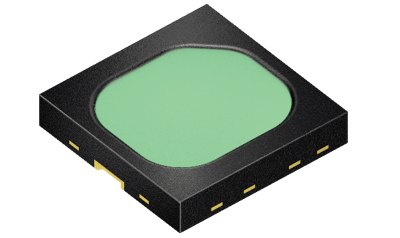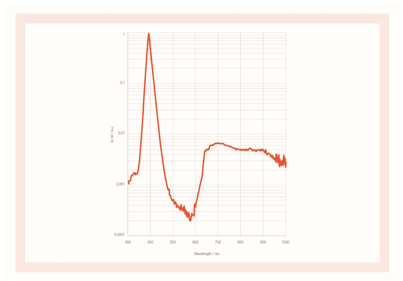Imagine using your smartphone to analyze three meals a day. Thanks to the new broadband infrared LEDs introduced by OSRAM Opto Semiconductors, this idea is about to become a reality.
The company's first phosphor technology was applied to infrared emitters, and the result was a LED that emits broadband infrared light in the 650nm to 1050nm wavelength range, creating an infrared spectroscopy technology for the consumer market. One of the application options is a compact sensor – similar to a USB memory stick that can be used with the corresponding smartphone app to measure calories, freshness or nutrients.

OSRAM Opto Semiconductors introduces the first wideband infrared LED SFH 4735, which is used in near-infrared spectroscopy for food analysis.
Infrared spectroscopy uses the unique absorption behavior of certain molecular compounds to determine the presence and amount of certain components by the wavelength distribution of the reflected light when the set spectrum is illuminated on the sample. This method is used in the food industry, agriculture, and other industries to measure moisture, fat, carbohydrates, sugar, or protein content in foods. In addition, the data provides an indication of freshness, quality or calories.

A thermal or nutritional sensor in a smartphone. With the help of OSRAM Opto Semiconductors' first broadband infrared LED, near-infrared spectroscopy for measuring fat, protein, moisture or sugar content in foods will be extended to everyday applications.
The first phosphor for infrared emitters
The introduction of the SFH 4735 means that OSRAM Opto Semiconductors has successfully produced the world's first broadband-emitting infrared LED. This component is the ideal source for near-infrared spectroscopy and is ideal for measuring food quality. As the latest research result of OSRAM, it helps the sensor technology to successfully enter the consumer goods field and be used as an add-on component to smartphones. Based on the Blu-ray 1 mm2 chip with UX:3 technology, the SFH 4735 emits light that can be converted to infrared radiation with the help of phosphors developed specifically for this application. The residual blue component in the light will help the user locate the target area he wants to investigate. The emission spectrum of SFH 4735 has a uniform spectral distribution in the infrared range. The chip is mounted in a reliable and compact Oslon Black Flat package with exceptional heat resistance.


Osram Opto Semiconductors' first broadband infrared LED, the SFH 4735, emits wavelengths from 650 nm to 1,050 nm. It is based on blue-chip chips and special fluorescence converters. The main application areas are near-infrared spectroscopy, for example through smartphone applications. The program conducts food analysis.
Food analysis assisted biological monitoring
The compact unit is used in spectrochemical analysis to open up new applications in the field of consumer electronic components. Experts predict that in the near future, spectrometers will likely integrate directly into mobile devices. This new technology is a natural extension of biomonitoring, in other words, a trend to measure various vital signs such as pulse rate and calorie expenditure. With a smartphone spectrometer, users can not only monitor the food they eat in a similar way, but also detect the drug in the same way.

Sterilization Card Bags
Guangzhou Ehang Electronic Co., Ltd. , https://www.ehangmobile.com